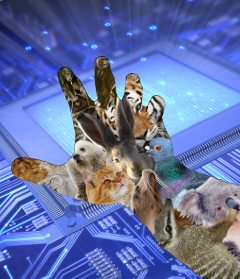Gene-editing gets higher definition
 US scientists have devised a new method of gene editing that can find and replace single letters of DNA.
US scientists have devised a new method of gene editing that can find and replace single letters of DNA.
The new class of 'base editors' - programmable protein machines that rearrange the atoms of one DNA base to resemble a different base in the genome of living cells - now make it possible to individually replace all four bases of DNA selectively and efficiently, without causing any double-stranded DNA breaks.
The new technique could be used to correct single-base mutations that cause genetic diseases.
It could also be used to introduce disease-suppressing single-base mutations, which would contribute to our understanding of genetic disease and the search for new therapies.
The DNA double helix is made of four chemical bases or ‘letters’ — adenine (A), guanine (G), cytosine (C) and thymine (T) — arranged so that C pairs with G, and A with T.
The new editing method – which is based on the existing CRISPR–Cas9 system - is more efficient than previous methods at correcting single-base mutations and less prone to generating undesired DNA modifications without causing random deletions or insertions in the genome.
These faults are a common outcome of methods including CRISPR–Cas9, which make double-stranded breaks in DNA.
Until now, researchers have only been able to convert G•C base pairs to T•A base pairs.
In the new study, researchers describe a new class of adenine base editors (ABEs) that enable A•T base pairs to be converted to G•C base pairs.
About half of all known disease-related single-base-pair changes involve the conversion of a wild-type G•C base pair to a mutant A•T base pair, so the new system offers the chance to reverse many such mutations.
The ABEs have been shown to work on DNA in both bacterial and human cells.
In human cells, they can introduce the desired genetic change at a wide range of target regions with an efficiency of around 50 per cent, higher than that of other genome-editing methods, and with virtually no undesired by-products, such as random insertions, deletions or other mutations.








 Print
Print